
Cocaine Nation: How the White Trade Took Over the World
by
Thomas Feiling
Published 20 Jul 2010
The country’s emaciated public schools and its crumbling infrastructure, key parts of the vicious circle driving the drug economy, warranted even less discussion. These issues need to be addressed, which is why a politician’s take on drug policy is perhaps a better gauge of his or her political convictions than any other. I started to map out the idea for a book about cocaine in 2006. The crack epidemic had inspired a lot of books about the American drugs trade in the 1990s. There was also a smaller, specialist literature that looked at the anti-drugs policies that the U.S. was pushing on Caribbean and Latin American countries. But no book that I could think of looked at all facets of the story: at the illegal production, distribution and consumption of cocaine around the world, their origins, drivers and consequences.
…
Production is controlled by the actors in Colombia’s civil war to a greater degree than ever before. Distribution in the United States is controlled by Mexican cartels. The European market for cocaine has expanded over the past 10 years and West Africa has become a major staging post en route to Europe. Unlike the United States, European countries haven’t had to deal with a crack epidemic and this has affected Europeans’ attitudes to the drug, which are positively lackadaisical when compared to those of most Americans. The world-wide ban on hard drugs like cocaine has been orchestrated by Americans to fight very American drug problems. This has antagonised countries with quite different experiences of hard drugs.
…
There has been no better popular exposé of the failure of drugs policy in the United States than the HBO television series The Wire. Set entirely in Baltimore, Maryland, the series was devised by a former journalist with the Baltimore Sun and a former narcotics detective with the city’s police department. Its storylines are grounded in the writers’ shared experience of the crack epidemic that swept through the East Coast cities of the United States in the 1980s. Kurt Schmoke, who has a cameo role in the series, was mayor of Baltimore from 1987 to 1999. When I met him in November 2007, he told me that he shared the writers’ frustration at the state of local and national policy-making on the issue of drugs.
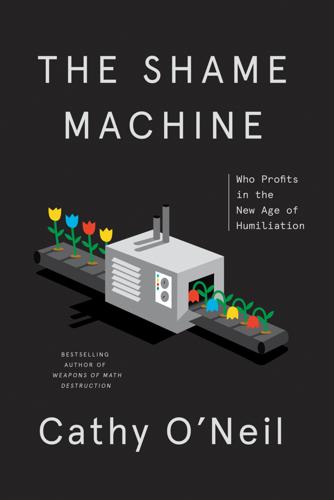
The Shame Machine: Who Profits in the New Age of Humiliation
by
Cathy O'Neil
Published 15 Mar 2022
And, sure, many experimented with drugs and drank. But as a population, they were moving in the right direction. Those headed for the brightest futures were studying for college entrance exams and padding their résumés with all sorts of extracurricular activities. In other words, the response to the crack epidemic, in most of the country, was to blame the victims. This meant taking only minimal measures to help afflicted communities confront this terrifying public health crisis. Instead, legislators imposed draconian punishments and attempted to distance themselves from the problem. Hundreds of thousands, including enormous numbers of young Black males, were sent to prison for crack-related offenses, many facing obscenely long sentences.
…
Yet there was another issue, mostly unspoken: The people who made laws were familiar with cocaine. They knew it from college dorms and parties; a good number of them had snorted a few lines. Crack, in their eyes, was a “ghetto” drug. They associated it with other people. At the height of the crack epidemic, this distinction was encoded into racist federal law. The so-called 100-to-1 rule, passed in 1986, stipulated a sentence of no less than five years for carrying five hundred grams of cocaine, or a bit more than a pound. But those carrying a mere five grams of crack, just a few pebbles, faced the same minimum.
…
In this sense, stigma results in shame, because it signals who is valued and who is not in the eyes of society. When institutions and governments assign themselves stigmatizing roles, they create systems of assigned merit. In other words, if you are told by all the world that you are not worthy, you often end up feeling that way. The result: The crack epidemic unleashed a frenzy of punching-down shame. What was the alternative? Consider Blossom trying to sleep under the Florida bridge. If she were your sister or your daughter, what would you suggest? The first step, no doubt, would be to help her beat her addiction. Rehab would work best if she had a safe place to live, ideally surrounded by a supportive community, perhaps including her children.

This Is Your Country on Drugs: The Secret History of Getting High in America
by
Ryan Grim
Published 7 Jul 2009
He cites the Drew story—“a man who had benefited medicine for all races died because of anti-black attitude”—and concludes that “[e]ven if a major investigation into the allegations is done, it is unlikely to quell the certainty among many African Americans that the government played a role in bringing the crack epidemic to black communities.” Nonetheless, the Post quelled the best it could, going after the portions of Webb’s story that most explicitly suggested a racist conspiracy against American citizens. In the process, it authored a myth of its own: that everything in “Dark Alliance” was wrong. The October 4 package’s lead piece, “CIA and Crack: Evidence Is Lacking of Contra-Tied Plot,” was written by Pincus and national-desk staffer Roberto Suro, who rejected “the idea that Blandón and Ross alone could have launched the crack epidemic.” Webb hadn’t reported exactly that, but he did note that cocaine “was virtually unobtainable in black neighborhoods before members of the CIA’s army started bring it into South Central in the 1980s at bargain basement prices.”
…
The coke industry pulled itself out of this apparent death spiral through an innovation that helped it reach thousands of new consumers: crack. Cheap and packing a quick punch, crack was the perfect $5, five-minute escape. It began to spread throughout the nation, especially in poor African American communities. Since the eighties, skeptics have cast doubt on the severity of the crack epidemic. In 1984, when coke use peaked in the United States, around 18 percent of people between the ages of eighteen and twenty-five had used cocaine, but the numbers for crack were much more modest. Monitoring the Future first began to break out crack as a category in 1986, when it found that 4.1 percent of high-school seniors had used it in the previous year.
…
The Congressional Black Caucus, led by Los Angeles Democrat Maxine Waters, demanded an investigation. (Waters even traveled to Nicaragua to conduct her own.) The head of the CIA traveled to South Central Los Angeles to meet with hundreds of residents packed into a huge community meeting, where he denied angry accusations that his agency had purposely caused the crack epidemic. Kurtz “initially got into this because black radio hosts and others were seizing on the Gary Webb series and making claims that went far beyond what he had actually reported,” he told me. “And the person who agreed with me on that was Gary Webb. . . . He considered me always to be fair to him.”
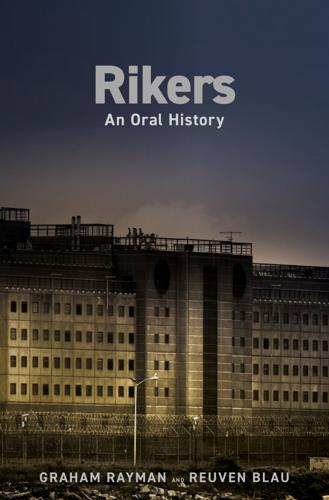
Rikers: An Oral History
by
Graham Rayman
and
Reuven Blau
Published 17 Jan 2023
You know, they were allowed to have motorcycle boots back there, and they were wearing motorcycle jackets. In ’84, ’85, there were stabbings and slashings [in the teen jail]. And when I came back in ’88, it was like a war zone. When the Bloods and the Latin Kings became really big, that’s when the stabbings and slashings went wild, and the crack epidemic was simultaneous to that. The violence was out of control. We were averaging fifty, sixty slashings a month. It became routine. A guy gets slashed, we would do a search, we would transfer the guy out. Depending on the victim’s case, we would make them a PC [protective custody] and the guy would go to the Bing.
…
Terrence Skinner fought many battles on the job, and avoided some land mines, in his rise to deputy warden. He now helps care for his grandchildren. SIDNEY SCHWARTZBAUM, retired deputy warden, union president, 1979 to 2016: In the ’80s, the population started to explode. I think crime was on the rise. There were a lot of drugs. I was a captain already when the crack epidemic started. In 1988, Rikers was a lot worse as far as stabbings and slashings. We would have people getting beat up. We’d have a stabbing once in a while from like 1979 to ’85 when I was there as an officer. But by 1988, it was fifty. I was there for like eight months as a tour commander. There were fifty slashings a month over there.
…
Over the course of the ’90s and the aughts, lots of people were working to change the system and to promote alternatives to incarceration, post-adjudication and pre-adjudication, that were driving the numbers down. VALERIE YOUNGBLOOD, public defender, 1982 to 1996: I was there really from 1982 to 1996, for the heart and guts of the crack epidemic in New York City anyway. The numbers of cases were staggering. It was common at any given time to have thirty to thirty-five indicted felonies plus like fifty, sixty misdemeanor cases. It was overwhelming. People were getting pleaded out before there was any discovery. There were many, many more trials than there are now.
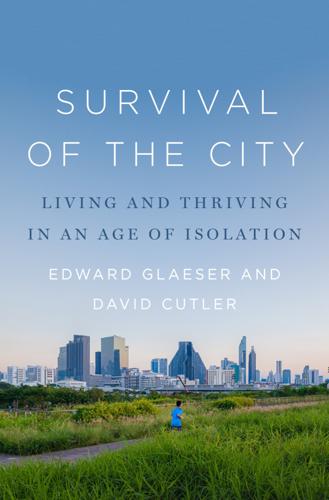
The Survival of the City: Human Flourishing in an Age of Isolation
by
Edward Glaeser
and
David Cutler
Published 14 Sep 2021
The New York Times, April 19, 2020. www.nytimes.com/2020/04/19/nyregion/coronavirus-nj-andover-nursing-home-deaths.html. Turak, Natasha. “UAE to Suspend All China Flights except for Beijing as Coronavirus Toll Mounts.” CNBC, February 3, 2020. www.cnbc.com/2020/02/03/coronavirus-uae-to-suspend-all-china-flights-except-for-beijing.html. Turner, Deonna S. “Crack Epidemic.” Encyclopædia Britannica Online. Accessed December 29, 2020. www.britannica.com/topic/crack-epidemic. Turner, Frederick Jackson. The Significance of the Frontier in American History. London: Penguin, 2008. Tuthill, Kathleen. “John Snow and the Broad Street Pump: On the Trail of an Epidemic.” UCLA Fielding School of Public Health Department of Epidemiology.
…
The alleged safety of OxyContin was proved to be a lie in less than five years. Users started crushing time-release tablets to get the full dose of oxycodone at once. As the number of pills increased, so did the number of fatalities. The death rate from drug overdoses in the US rose from below 5 per 100,000 in 1990, despite the crack epidemic, to over 15 per 100,000 in 2015. This new drug wave was entirely legal. Thus, the urban drug market was somewhat less important—though it did smooth the flow from those with prescriptions to those without. Instead, the first wave of opioid deaths occurred in more depressed parts of rural America.
…
High crime rates caused people to flee cities, which resulted in a lower tax base, which led to an increased fiscal burden on remaining residents and a further round of urban flight. The long sentences imposed for drug crimes generally, and particularly for crack cocaine, helped spur the massive increase in incarceration that tore apart urban neighborhoods. We will return to these issues in chapter 9. Fortunately, the opioid overdose epidemic is not as violent as the crack epidemic and has not led to the same burst in mass imprisonment. Reducing Deceit through Better Incentives There are many culprits in the opioid epidemic. The federal government not only permitted the prescribing of OxyContin after 1995 but actually subsidized its use through public health insurance programs, including Medicare and Medicaid, that did not restrict utilization.

The Gods of New York: Egotists, Idealists, Opportunists, and the Birth of the Modern City: 1986-1990
by
Jonathan Mahler
Published 11 Aug 2025
In May—with violent crimes up 8 percent over the previous year—the drug hit the cover of the Daily News in a harrowing special report from inside a crack den. (“They stood in the basement in Harlem, the pipe and its insidious swirl of white smoke between them, and nobody in the room noticed or cared that they were pregnant,” it began.) An accompanying editorial described the crack epidemic as “the most devastating assault upon the U.S. in decades.” Days later, Ward created a one-hundred-member task force to focus solely on the drug. In June, after the college basketball star Len Bias died from a cocaine overdose, crack exploded into the national consciousness. Bias had snorted the drug, not smoked it, but that made little difference in the moment.
…
Koch was in high spirits as he settled into his black leather armchair for his annual year-end interview with the City Hall press corps. “I am a very lucky man,” he began, reflecting on his full recovery from his stroke. The year 1987 had not been a good one for New York City. Crime rates had spiked for the second straight year, as the crack epidemic continued its rampage. AIDS remained the leading cause of death in the city for men between the ages of twenty-five and forty-four, and for women aged twenty-five to thirty-four; somewhere around 400,000 New Yorkers were now believed to be infected with HIV. The homeless population had continued to swell.
…
But he was leaving behind a police department that more closely resembled the makeup of the city than the one he’d inherited: He had increased the number of Hispanic officers by 60 percent, the number of Black officers by 17 percent, and the number of women by 85 percent. He’d been unable to realize his vision of community policing, which he was confident would have gone a long way toward addressing that mistrust. He didn’t have the luxury of exempting officers from spending all their time responding to emergencies. His flood-the-zone response to the crack epidemic had broken the city’s drug-arrest records for four straight years and fueled the rise of the carceral state. But as a police commissioner facing a historic spike in crime with scarce resources, his options had been limited. Ward seemed much more relaxed than usual at a press conference at One Police Plaza the day after the news of his resignation broke, though his breathing was noticeably labored.

More Guns, Less Crime: Understanding Crime and Gun-Control Laws
by
John R. Lott
Published 15 May 2010
The results reported earlier in table 4.9 provide the information on how the right-to-carry laws affected the crime rates across states. 10 Are the results valid only when Maine and Florida are included? I will try to summarize the argument here. Ian Ayres and John Donohue are concerned about the inclusion of Maine and Florida for several reasons: (1) the results discussed by Black and Nagin, (2) the issue of whether the crack epidemic might have just happened to cause the relative crime rates to rise in non-right-to-carry states in the late 1980s, and (3) objections to whether Cramer and Kopel were correct in classifying Maine as a right-to-carry state. To satisfy their concerns, Ayres and Donohue use several different approaches, such as dropping both Maine and Florida out of the sample.
…
One of the two states whose laws went into effect after 2000 also showed a drop, while the other, Missouri, showed no change. This pattern casts doubt on the claim that the crack cocaine epidemic during the late 1980s and early 1990s is driving the results, because these results show drops in crime rates whether the right-to-carry laws went into effect before, during, or after the crack epidemic. Figure 10.2 shows the pattern for murder rates by the decade that the right-to-carry law went into effect. It graphs out what was shown in table 10.5a. Clearly, the murder rates start falling after the law, though 276 | CHAPTER TEN Table 10.6 The impact of right-to-carry laws on victimization costs (millions of 2007 dollars) Murder Alaska Arizona Arkansas Colorado Florida Georgia Idaho Kentucky Louisiana Maine Michigan Minnesota Mississippi Missouri Montana Nevada New Mexico North Carolina Ohio Oklahoma Oregon Pennsylvania South Carolina Tennessee Texas Utah Virginia West Virginia Wyoming Total Average per state Per capita Excluding Florida: Total Average per state Per capita Rape Robbery Aggravated assault Property crime –$36.91 –$67.35 –$795.17 –$110.29 –$19.85 –$182.53 –$28.61 $127.33 –$137.97 –$1.26 –$258.63 $38.05 –$42.19 $104.84 –$264.70 –$6,652.83 –$1,490.79 $3.50 –$18.56 –$547.55 –$31.41 –$289.53 –$127.05 –$122.11 –$1,795.62 –$118.89 –$2.61 –$3.15 –$107.19 $11.93 –$3,368.81 –$208.35 $3.78 $28.72 –$128.08 –$6.57 –$149.53 $40.88 –$53.45 $4.06 –$6.90 $153.92 –$42.26 $123.29 $0.00 $212.79 –$2,834.34 –$0.63 $6.84 $10.73 –$70.19 –$1.13 –$153.37 $0.00 –$12.96 –$4.33 –$158.07 $70.39 –$126.29 $270.82 –$707.18 –$168.72 –$492.25 $195.55 –$282.37 –$3,263.15 –$37.02 –$421.56 –$122.35 $2.39 –$15,419.92 –$571.11 –$111.38 $0.24 –$48.00 –$11.31 –$90.48 –$37.24 –$202.90 –$30.24 –$2.71 –$71.77 –$209.50 –$882.25 $27.97 $33.52 –$21.28 –$5.69 –$4,030.40 –$155.02 –$29.11 –$131.82 –$67.03 $89.37 $43.31 –$50.29 –$1,566.65 $14.15 $43.51 –$5.37 –$0.07 –$5,392.38 –$215.70 –$38.95 $16.46 –$235.82 –$8.33 –$200.92 $8.73 –$100.52 –$189.06 $147.51 –$332.01 $332.65 –$135.67 $29.44 $19.91 $0.00 $3.23 –$433.91 –$14.96 –$3.13 $14.10 –$48.57 $8.13 –$106.80 –$2.81 –$316.14 $38.63 $61.49 –$42.53 –$132.71 –$1,619.63 –$3.00 $40.54 –$8.16 $0.17 –$5,374.38 –$185.32 –$38.82 –$8,767.10 –$337.20 –$63.33 –$2,234.78 –$89.39 –$16.14 –$2,023.58 –$84.32 –$14.62 –$474.78 –$16.96 –$3.43 –$2,540.04 –$90.72 –$18.35 –$82.40 –$68.16 $33.72 –$0.01 –$0.08 –$67.20 $140.17 Note: Except for the per capita estimates, all dollar amounts are in millions of dollars.
…
When the counties adopting the law experienced a drop in violent crime, neighboring counties directly on the other side of the border without right-to-carry laws experienced an increase. . . . Ayres and Donohue argue that different parts of the country may have experienced differential impacts from the crack epidemic. Yet, if there are two urban counties next to each other, how can the crack cocaine hypothesis explain why one urban county faces a crime increase from drugs, when the neighboring urban county is experiencing a drop? Such isolation would be particularly surprising as criminals can easily move between these counties. . . .

Gang Leader for a Day: A Rogue Sociologist Takes to the Streets
by
Sudhir Venkatesh
Published 13 Aug 2010
So he may have felt he couldn’t afford to have his authority challenged in their presence, even by a senior citizen whose legs probably couldn’t buy him one lap around a high-school track. Still, J.T.’s explanation seemed so alien to me that I felt I was watching a scene from The Godfather. By now it was nearly a year since I’d started hanging out with J.T.’s gang. It was 1990, which was roughly the peak of the crack epidemic in Chicago and other big U.S. cities. Black and Latino gangs including the Kings, the Cobras, the Disciples, the Vice Lords, the MCs (Mickey Cobras), and even the Stones, which had been temporarily dismantled a few years earlier, were capitalizing on a huge demand for crack and making a lot of money.
…
Politicians, academics, and law-enforcement officials all offered policy solutions, to little avail. The liberal-minded deployed their traditional strategies—getting young people back into school and finding them entry-level jobs—but few gang members were willing to trade in their status and the prospect of big money for menial work. Conservatives attacked the crack epidemic by supporting mass arrests and hefty prison sentences. This certainly took some dealers off the streets, but there was always a surplus of willing and eager replacements. The national mood had grown increasingly desperate—and punitive. Prosecutors won the right to treat gangs as organized criminal groups, which produced longer prison sentences.

Deaths of Despair and the Future of Capitalism
by
Anne Case
and
Angus Deaton
Published 17 Mar 2020
Wilson attributes the problems faced by the inner-city black community to “the large scale and harmful changes in the labor market, and its resulting spatial concentration as well as the isolation of such areas from the more affluent parts of the black community.”6 Writing about the parallel today, the economist Raghuram Rajan notes that talented and well-educated young people have headed to the growing, successful, high-tech towns and cities.7 African American inner-city communities faced a crisis of crack cocaine in the 1980s. The crack epidemic shows both contrasts and parallels with the current opioid epidemic. Crack was cheap and offered an immediate high that was highly addictive. Crime rates increased, as those addicted looked for money for their next fix. As crack dealers fought for a place on a street corner, homicide rates among young black men spiked.
…
With globalization, changing technology, rising healthcare costs of employees, and the shift from manufacturing to services, firms shed less educated labor, first blacks and then less educated whites. In both epidemics, drugs that could ease psychological or physical pain were available at an (arguably) affordable price to populations that were hungry for the escape that they seemed to offer. During the crack epidemic, the inner city offered few legitimate avenues of progress. In the opioid crisis, it is less educated whites, many of whom do not see a promising economic future, or a promising future in any aspect of their lives, who are falling prey to drugs, alcohol, and suicide. We should also not exaggerate the similarities, especially when we are comparing blacks and whites today.
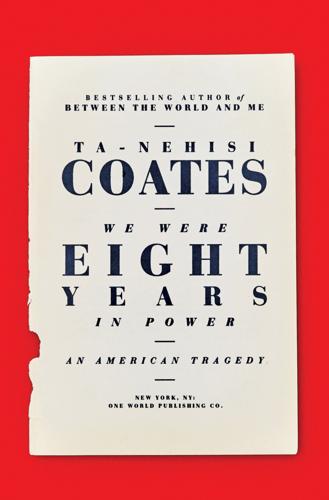
We Were Eight Years in Power: An American Tragedy
by
Ta-Nehisi Coates
Published 2 Oct 2017
Wilson, the noted social scientist and a co-creator of the “broken windows” theory of policing, retreated to abstract moralizing and tautology. “Drug use is wrong because it is immoral,” he claimed, “and it is immoral because it enslaves the mind and destroys the soul.” Others went further. “The inner-city crack epidemic is now giving birth to the newest horror,” the Washington Post columnist Charles Krauthammer declaimed: “A bio-underclass, a generation of physically damaged cocaine babies whose biological inferiority is stamped at birth.” In this way, “the crime-stained blackness of the Negro” lived on to haunt white America.
…
Indeed, the panic of white slavery lives on in our politics today. Black workers suffer—if it can be called that—because it was and is our lot. But when white workers suffer, something in nature has gone awry. And so an opioid epidemic is greeted with a call for treatment and sympathy, as all epidemics should be, while a crack epidemic is greeted with a call for mandatory minimums and scorn. Op-ed columns and articles are devoted to the sympathetic plight of working class whites when their life expectancy approaches levels that, for blacks, society simply accepts as normal. White slavery is sin. Nigger slavery is natural. This dynamic serves a very real purpose—the consistent awarding of grievance and moral high ground to that class of workers who, by the bonds of whiteness, stands closest to America’s master class.
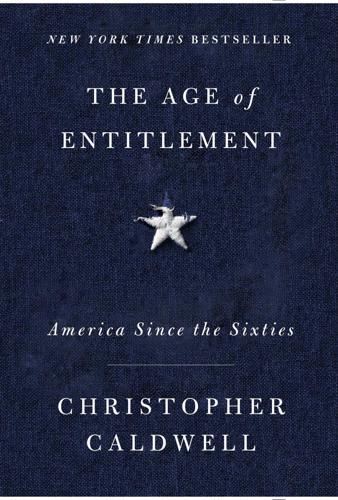
The Age of Entitlement: America Since the Sixties
by
Christopher Caldwell
Published 21 Jan 2020
Starting in the early 1960s, an astonishing spike in crime, in which blacks made up a disproportionate share of both perpetrators and victims, took on aspects of a national emergency. The emergency would pass through various stages: the looting episodes in Memphis that preceded the assassination of Martin Luther King on April 4, 1968, and a new wave of deadly riots that followed it, the Attica Prison Revolt of 1971, the New York blackout of 1977, the crack epidemic of 1986, the Los Angeles “Rodney King” riots of 1992, O. J. Simpson’s acquittal in his 1995 murder trial. After that, crime rates fell in general, but the overrepresentation of blacks in the criminal statistics never went away. By 2011, toward the end of Barack Obama’s first term in office, blacks, who make up 13 percent of the U.S. population, still accounted for 39 percent of the arrests for violent crime.
…
It give birth to an entire new world-spanning genre: “gangsta” rap, which would echo through the banlieues of Paris and the dusty villages of West Africa; turn Tupac Shakur and Biggie Smalls into symbols of the inner city’s violence but also its romance, wisdom, and swagger; and vie with rock ’n’ roll for a while before rap (more generally understood) supplanted rock as the music of American youth of all races. The crack epidemic was at least as serious a problem as the 1970s heroin spike, with a death-by-overdose rate reaching almost 2 per 100,000. By the time of the 2016 election, which it did much to decide, the opioid epidemic that had begun with OxyContin was killing not 1.5 or 2 but 20 Americans per 100,000. In New Hampshire, Ohio, and Pennsylvania it was killing almost 40 per 100,000, and in West Virginia it was killing 50.

Empty Vessel: The Story of the Global Economy in One Barge
by
Ian Kumekawa
Published 6 May 2025
In the 1980s, that desperation cascaded over already marginalized communities in New York. As it did so, it often led to extreme violence. In 1990, there were 2,245 reported homicides in New York City, more than five times the number reported in 2022.[76] By the time the Vessel arrived in New York, the city was in the midst of the crack epidemic, whose violence ricocheted around poor communities of color.[77] The extent of that violence goes a long way to explaining why American drug policies became so punitive and why sentencing guidelines for crack possession were a hundred times harsher than those for powder cocaine.[78] Certainly, in New York, crack lay behind the surging arrest and incarceration rates.
…
Burbank.[142] But though the City of New York sold the barges in 1994, it would be three years before the Vessel or its sister ship was moved out of the harbor. * * * • • • At a distance, the Vessel’s time in New York might be understood as a simple story of supply and demand. When the tough-on-crime “new penology” ran up against the grim realities of the crack epidemic, arrests surged. As the city’s jail population swelled, the available supply of jail space became scarce. Demand for more space rose. By the late 1980s, it had become so acute that city administrators were willing to spend tens of millions of dollars on stopgap measures. The Vessel and its sister ship were just that: temporary quick fixes for which increasingly desperate municipal administrators were willing to pay top dollar.
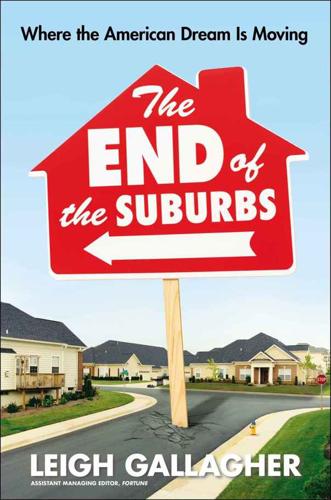
The End of the Suburbs: Where the American Dream Is Moving
by
Leigh Gallagher
Published 26 Jun 2013
In Boston, a West Coast development firm is building a twenty-story residential tower in Fort Point, the former industrial district that was the setting for much of the Martin Scorsese movie The Departed. This is, of course, a stark contrast to the destruction and decay that once plagued our cities, which in the ’60s saw street riots, in the ’70s suffered from white flight, and in the ’80s and ’90s experienced an influx of crime, prostitution, and a crack epidemic that ravaged urban areas across our nation. It’s hard to imagine now, but in New York, it wasn’t all that long ago that Times Square was dangerous, prostitutes trolled the Meatpacking District, and Central Park’s Belvedere Castle was boarded up and covered with graffiti. In 1975, the New York Daily News ran the now-famous headline “Ford to City: Drop Dead,” referring to Gerald Ford’s reluctance to bail the city out from bankruptcy and encapsulating a sentiment that our cities weren’t worth saving.
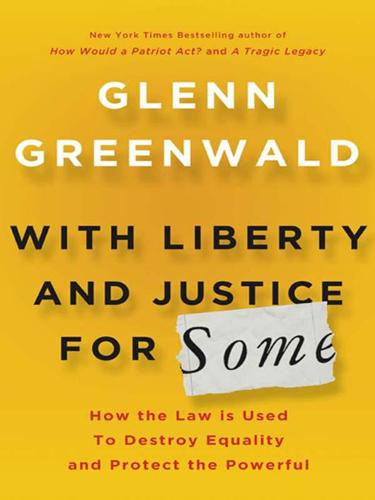
With Liberty and Justice for Some: How the Law Is Used to Destroy Equality and Protect the Powerful
by
Glenn Greenwald
Published 11 Nov 2011
“The drug problem has become so widespread that the FBI must assume a larger role in attacking the problem,” declared FBI director William Webster in 1981. The DEA grew very rapidly in the 1980s, relocating from a modest downtown Washington building into a sprawling northern Virginia complex. Strident warnings about the drug trade, particularly the melodramatic 1980s media jeremiads about the “crack epidemic,” further fueled the law-and-order movement. Multiple new laws, including the Anti-Drug Abuse acts of 1986 and 1988, imposed draconian minimum sentence requirements on those convicted of trafficking in illicit substances or even merely possessing relatively small amounts of them. But it was the 1988 presidential election that cemented law and order as American orthodoxy.

Methland: The Death and Life of an American Small Town
by
Nick Reding
Published 1 Jul 2009
Newspaper columnists from the Wall Street Journal, the New York Times, and the Miami Herald agreed. John Tierney of the Times lamented that, thanks to meth, politicans had “lost sight of their duties.” Glenn Garvin of the Herald called the Oregonian’s coverage “nonsensical.” Craig Reinarman, whose criticism of the Reagan administration’s response to the crack epidemic was put forth in the book Crack in America, worried that the exorbitant meth coverage by papers like the Oregonian had further directed money to law enforcement and prison, and “away from the underlying sources of people’s troubles,” as he told Willamette Week. No one was more critical of the nation’s meth coverage than Jack Shafer of Slate.com, whose weekly columns tried to disprove every study on which the concept of a meth epidemic had stood.
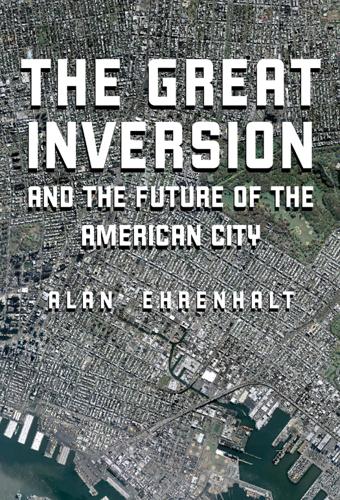
The Great Inversion and the Future of the American City
by
Alan Ehrenhalt
Published 23 Apr 2012
Knickerbocker Avenue, so recently a thriving commercial thoroughfare, degenerated into an open-air drug-dealing mall known as “the Well” and tightly controlled by the ruthless and widely despised crime boss Carmine Galante, who was finally gunned down while having lunch on the patio of Joe and Mary’s Restaurant at 205 Knickerbocker in 1979. Nothing much improved in the 1980s. The crack epidemic led to a still higher surge of violent crime, with seventy-seven murders in the neighborhood in 1990 alone. Bushwick differed from the South Bronx only in its failure to achieve national notoriety, and in its relative obscurity even to the residents of the other boroughs of New York City. Hardly anyone set foot in Bushwick who didn’t have to.

The Vanishing Middle Class: Prejudice and Power in a Dual Economy
by
Peter Temin
Published 17 Mar 2017
By 2000, one out of three black men was spending time in jail. The rise of mass imprisonment put great pressure on many black families, and led to social as well as economic problems.11 Nixon proclaimed the War on Drugs just as the Great Migration ended. Reagan and state governments expanded the war in the 1980s as the crack epidemic grew. Blacks were (and are) far more likely to be arrested for drug offenses than whites. At the same time, industry began to decline in the American Midwest, in what is now called the Rust Bowl, and the jobs that blacks came north to find began to disappear. They found conditions in the North better than in the South, but not as good as they had hoped.
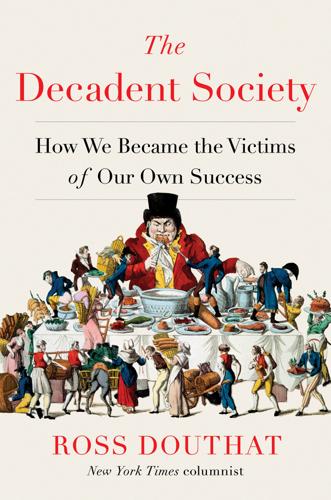
The Decadent Society: How We Became the Victims of Our Own Success
by
Ross Douthat
Published 25 Feb 2020
It’s not that there aren’t bursts of violence associated with the opioid trade, or addicts willing to commit murder for a fix. But, generally, Americans have ended up dying in record numbers from opioids without the kind of crime wave or murder spike, without the turbulence and chaos, that accompanied the crack epidemic. As the essayist Andrew Sullivan wrote for New York magazine in 2018, “The drugs now conquering America are downers: they are not the means to engage in life more vividly but to seek a respite from its ordeals.” And unlike pot, opioids are antisocial drugs, offering bliss that’s best experienced in solitude.
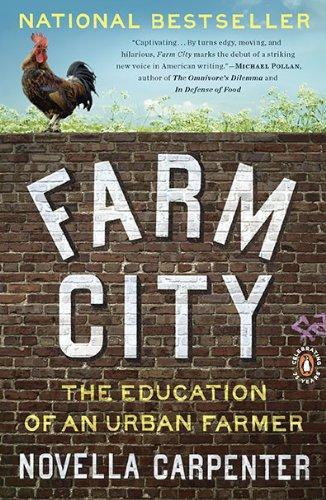
Farm City: The Education of an Urban Farmer
by
Novella Carpenter
Published 25 May 2010
Melvin and Ali said this so-called development bisected communities, ruined businesses, and destroyed the close-knit community that had thrived for years. There was no question that these neighborhoods had been slated for destruction because they were the least politically powerful. Later came the crack epidemic of the 1980s. Melvin and Ali got out a photo history of the Black Panthers and paged through it with me. Here was Lil’ Bobby Hutton, killed by the police though he was unarmed. Here was a Black Panther rally, everyone sporting a gun. Violence begetting more violence. Riding back to my farm in GhostTown, I took Shattuck instead of Martin Luther King, which led to a newly developed corner of North Oakland called Temescal.
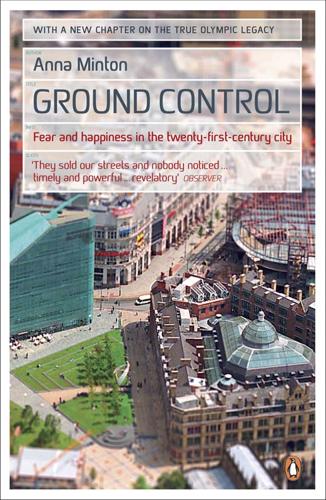
Ground Control: Fear and Happiness in the Twenty First Century City
by
Anna Minton
Published 24 Jun 2009
Instead researchers point out that crime began falling in most major US cities from the early 1990s and fell more sharply in places like San Diego, which didn’t crackdown on small offences. The conclusion from a number of studies is that the fall in crime in New York, and in other cities, was down to the reduction of the crack epidemic.37 During the same period researchers found that complaints against police misconduct, for surveillance policies such as stop-and-search and dispersal, rose by 37 per cent, lowering trust between the police and community.38 In the UK, according to figures from the Independent Police Complaints Commission, a record number of allegations against police were made for 2007/8, more than since records began in 1985, with a rise of nearly 25 per cent relating to the use of stop-and-search.39 Although few questions have been asked here, in the US even the pioneers of Broken Windows no longer agree with each other.
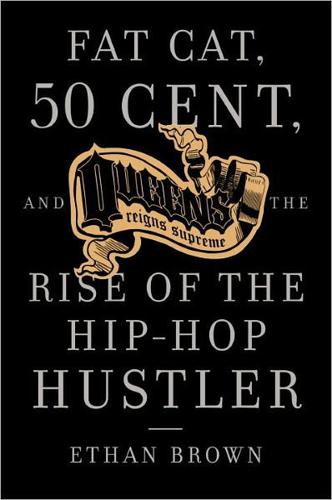
Queens Reigns Supreme: Fat Cat, 50 Cent, and the Rise of the Hip Hop Hustler
by
Ethan Brown
Published 22 Nov 2005
“Back in the eighties, ’Preme was the legend,” Irv proclaims, thumping his desk with his fist loudly for effect, “but guess what? I’m the fucking legend now.” Irv’s bravado is often reminiscent of both Scarface and Sunset Boulevard but there is a great deal of truth to it. During the eighties the crack epidemic brought mountains of cash to drug dealers big and small, thus making hustlers iconic. Though a few eighties-era MCs possessed a street pedigree—rapper Rakim famously rhymed, “I used to be a stick-up kid/So I think of all the devious things I did”— hip-hop and hustling inhabited separate social spheres.
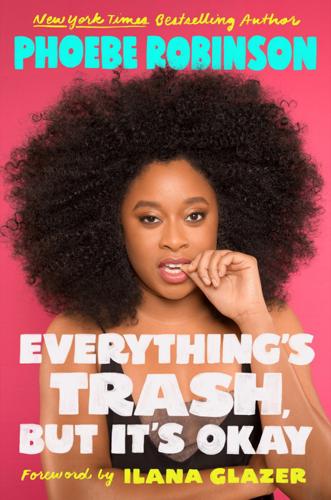
Everything's Trash, but It's Okay
by
Phoebe Robinson
Published 15 Oct 2018
Golf takes place at basically all-white country clubs (except for the staff, who are “conveniently” 95 percent people of color) and consists of a lot of middle-aged white dudes walking in pleated khakis for long stretches of time while a person of color carries all their shit and an umbrella to shade them from the summer heat. Y’all, I ain’t got time in 2018 to see a bunch of rich white dudes try to low-key bring back the cute parts of colonialism the way fashion is like, “Hahahaha! Everyone forget about the crack epidemic of the eighties and just focus on us putting shoulder pads back in women’s blazers so you all look like Melanie Griffith in Working Girl.” No. Fucking. Thanks. Golf.* So to recap, I like most sports except golf and, while we’re at it, NASCAR (but I think it’s obvious by now why I wouldn’t be into that one either).
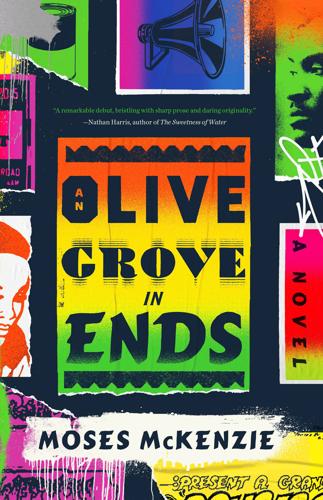
An Olive Grove in Ends
by
Moses McKenzie
Published 31 May 2022
I wouldn’t give them the name of a man who had grievously wronged me, let alone my own blood. The social workers tried to appeal to my humanity. They said that my cousin was a menace to society. The drugs he sold contributed to thousands of overdoses and drug-related deaths each year. They said that Bristol was suffering a crack epidemic, and if I gave my cousin up they could get him help and make a positive change in the city. I told them I couldn’t give a shit about anywhere other than my ends, or about random people dying. What business was that of mine? They left empty-handed and Cuba continued doing what he was doing until a year later, when Cordell was sent down for breaking a bottle over a bouncer’s head.
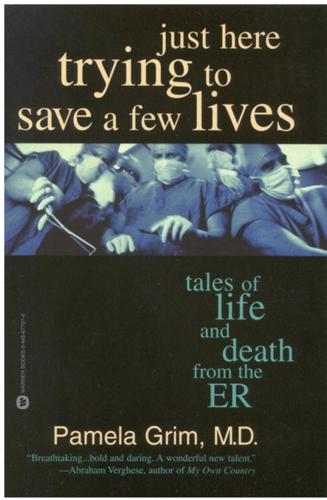
Just Here Trying to Save a Few Lives: Tales of Life and Death From the ER
by
Pamela Grim
Published 1 Jan 2000
This meant that, in addition to the usual domestic type of violence you have in any ER, we saw terrible things: machete slashings, butcher-knife dismemberings, Uzi slayings, cop-versus-bad-guy shootouts, four- or five-year-old kids riddled with bullets and clearly too dead to even think about trying to resuscitate. Bosnia had nothing on this swath of ghetto except maybe a few more land mines and a few less Uzis. That summer we saw the first wave of the crack epidemic coming through, watched the early stages of destruction of a generation from our unique vantage point. Sometimes we saw crack addicts with acute symptoms: a myocardial infarction in an otherwise healthy thirty-four-year-old man; exacerbation of psychotic symptoms in a schizophrenic. Mostly, though, we saw the crack-heads when they were at the end of the line—badly addicted, broke, strung out.

Against Everything: Essays
by
Mark Greif
Published 5 Sep 2016
In its other dimension, of course, gangster crime was a consequence and representation of the economic abandonment of the bulk of black America, everybody who had not yet reached the institutional uplift of higher education or the stability of middle- and upper-class wealth. Its drug was crack. Scholars have shown in the decades since the so-called crack epidemic that the instant addiction, violent madness, and “crack babies” attributed to the drug at the time were overblown or fake. Crack wasn’t very different chemically from the cocaine from which it was made. Crack’s significance was its business model. This was a capitalist innovation, though one at the level of cottage industry.
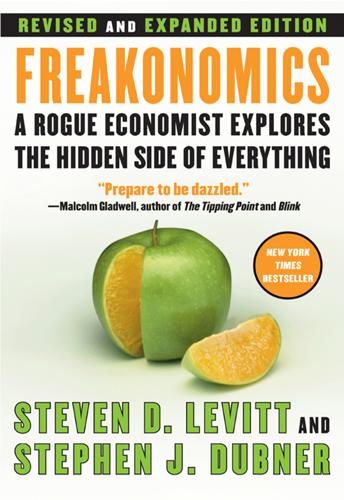
Freakonomics: A Rogue Economist Explores the Hidden Side of Everything
by
Steven D. Levitt
and
Stephen J. Dubner
Published 11 Apr 2005
The Chicago school system, rather than disputing Levitt’s findings, invited him into the schools for retesting. As a result, the cheaters were fired. Then there is his forthcoming “Understanding Why Crime Fell in the 1990’s: Four Factors That Explain the Decline and Seven That Do Not.” The entire drop in crime, Levitt says, was due to more police officers, more prisoners, the waning crack epidemic and Roe v. Wade. One factor that probably didn’t make a difference, he argues, was the innovative policing strategy trumpeted in New York by Rudolph Giuliani and William Bratton. “I think,” Levitt says, “I’m pretty much alone in saying that.” He comes from a Minneapolis family of high, if unusual, achievers.
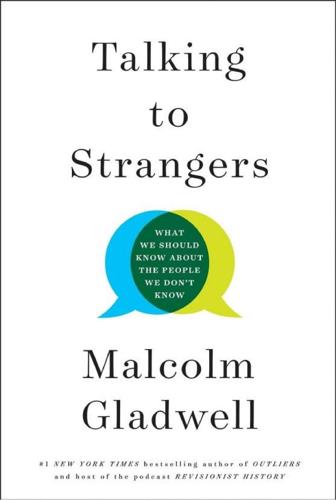
Talking to Strangers: What We Should Know About the People We Don't Know
by
Malcolm Gladwell
Published 9 Sep 2019
They had thought they could prevent crime with police patrols, but now the Kansas City PD had tested that assumption empirically, and patrols turned out to be a charade. And if patrols didn’t work, what did? Lee Brown, chief of the New York City Police Department, gave a famous interview in the middle of the crack epidemic in which he all but threw up his hands. “This country’s social problems are well beyond the ability of the police to deal with on their own,” Brown said. He had read George Kelling’s Kansas City report. It was hopeless. No matter how many police officers a city had, Brown said, “You could never have enough to use traditional policing techniques to deter crime.

Hate Inc.: Why Today’s Media Makes Us Despise One Another
by
Matt Taibbi
Published 7 Oct 2019
Scare the crap out of people, and media companies get richer, while state agencies get more and more license for authoritarian crackdowns on the “folk devil” of the moment. A perfect partnership. The crack story exemplified this. TV stations glamorized the “wars” on the streets, got great ratings, yet rarely got to the heart of what the crack epidemic was: a way for cocaine cartels to expand the consumer base beyond the saturated market of upper-class buyers of powder coke. Crack was just the cartel version of a corporate marketing ploy to rope in poorer consumers. Poor crackheads scared the public so much, authorities wishing to fight them got almost anything they asked for.
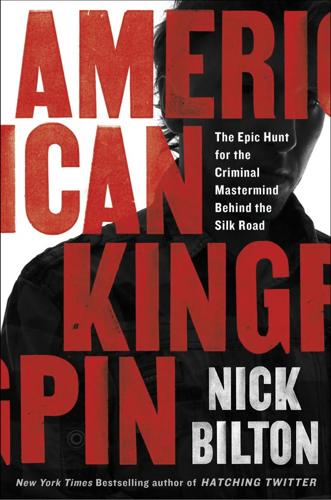
American Kingpin: The Epic Hunt for the Criminal Mastermind Behind the Silk Road
by
Nick Bilton
Published 15 Mar 2017
(Gary used to joke with people that “I shut the city down when I was born!”) On top of the riots and power outages, New York was also being haunted that summer by a serial killer nicknamed the Son of Sam. Gary didn’t last long in the housing projects. In the 1980s his family moved farther east, to Canarsie, after colorful crack vials from New York’s rising crack epidemic had started to line the gutters around Stillwell Avenue, where they lived. Now, thirty years later, Gary sat amid the faded green and white cubicles at 290 Broadway, checking his e-mail (reading each one three times) and finishing up reports from previous investigations that involved people who had tried to hide money from the U.S. government in far-off countries.
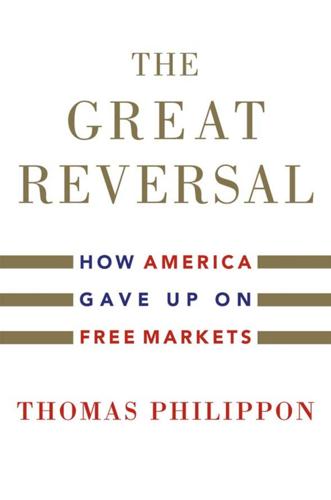
The Great Reversal: How America Gave Up on Free Markets
by
Thomas Philippon
Published 29 Oct 2019
Some of the worst have manifested during the opioid epidemic, which has been spreading rapidly through the US since the early 2000s. The opioid epidemic is the worst overdose epidemic in US history. Overdose deaths from prescription opioid pain relievers nearly quadrupled between 1999 and 2010, exceeding the death rate during the crack epidemic of the 1980s. Mortality due to crack was two per hundred thousand. Mortality due to opioids is ten per hundred thousand and has reached forty per hundred thousand in West Virginia. The opioid epidemic has a demand side and a supply side. The demand side has been attributed to social and economic conditions in the US and thus cannot be blamed on deficiencies in the health-care system.
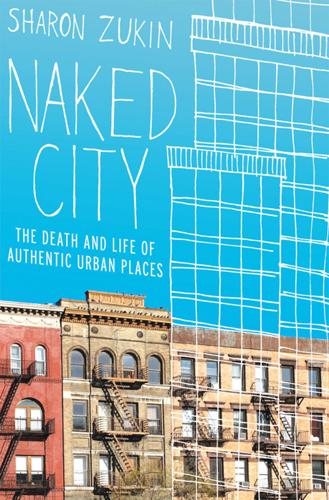
Naked City: The Death and Life of Authentic Urban Places
by
Sharon Zukin
Published 1 Dec 2009
The dark ghetto’s inescapable overlay of race and poverty was ground in by the illegal drug trade—this was when Frank Lucas says he earned a million dollars a day selling dope on 116th Street—and by the government’s increasing unwillingness to rebuild. “It’s a bitter harvest after ten years,” said the archdeacon of New York’s Episcopal diocese. “But looking back on them, we have no reason to expect anything else. The will for change, real change, never was there.”18 Life grew ever more violent in the 1980s because of the crack epidemic, when more buildings were abandoned and boarded up. During these years the New York City government became Harlem’s biggest property owner by seizing buildings in rem when landlords didn’t pay their taxes. Small landlords decided it was more rational to walk away than to make needed improvements, for no one wanted to buy these buildings and tenants couldn’t pay higher rents.
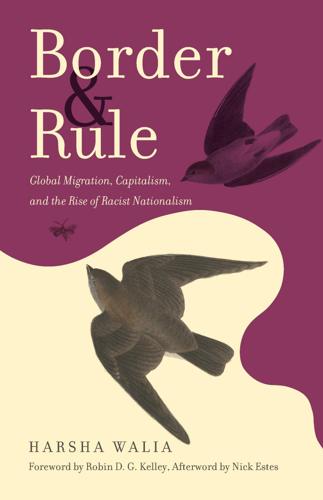
Border and Rule: Global Migration, Capitalism, and the Rise of Racist Nationalism
by
Harsha Walia
Published 9 Feb 2021
Whereas neoliberalism is typically understood through the lens of laissez-faire state economics, David Harvey argues it is a comprehensive political project to weaken the power of labor and expand institutional networks of capital accumulation.11 Impoverishment and unemployment generated through neoliberalism in the 1980s was masked by the explosion of the prison industrial complex, itself bolstered by a race-baiting media spectacle about an alleged crack epidemic. This justified a radical transformation of the criminal justice system geared toward drug prosecutions. Furthermore, a “culture of poverty” narrative profiling Black families was accompanied by a broken windows model of policing that linked poor Black communities to disorder. Police officers justified broken windows policing by arguing that enforcing laws against low-level, poverty-related, and property-related offenses, such as street vending or graffiti, prevented serious violent crime.
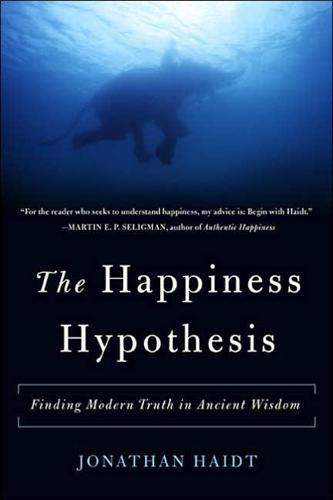
The Happiness Hypothesis: Finding Modern Truth in Ancient Wisdom
by
Jonathan Haidt
Published 26 Dec 2005
Even cockroaches were disappearing from our cities b e c a u s e of widespread u s e of the roach poison C o m b a t . So what on earth was she talking about? When the moral history of the 1990s is written, it might be titled Desperately Seeking Satan. With peace and harmony ascendant , Americans s e e m e d to be searching for substitute villains. We tried drug dealers (but then the crack epidemic waned) and child abductors (who are usually one of the parents). T h e cultural right vilified homosexuals; the left vilified racists and ho-mophobes. As I thought about these various villains, including the older villains of communism and Satan himself, I realized that most of them share three properties: They are invisible (you can't identify the evil one from appearance alone); their evil spreads by contagion, making it vital to protect impressionable young people from infection (for example from communist ideas, homosexual teachers, or stereotypes on television); and the villains can be defeated only if we all pull together as a team.
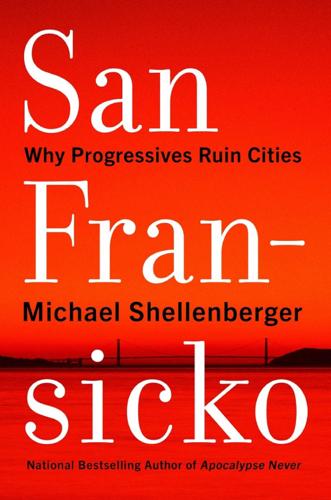
San Fransicko: Why Progressives Ruin Cities
by
Michael Shellenberger
Published 11 Oct 2021
For ten years after Governor Nelson Rockefeller and the state legislature increased penalties for drug use beginning in 1973, the number of people in prison for drugs hardly changed. Then, in 1984, the number of people incarcerated for drug crimes started to rise sharply due to violence associated with the crack epidemic. More than a decade later, in 1997, total inmates in New York prisons for drug offenses peaked and began their long decline, mostly because of a reduction in violence. It was only in 2004 and again in 2009 that the state legislature reduced penalties, and the declining rate of incarceration for drug crimes didn’t change after those two years.22 And those who put many of the stricter drug laws into place did so because they were under pressure to protect African American communities suffering from violence associated with gang warfare over open-air crack markets.23 Notes Pfaff, “when prosecutors weren’t too concerned about drug crimes, they simply ignored the Rockefeller Drug laws, whether during the rising-crime 1970s or the falling-crime 1990s and 2000s.”24 Rising incarceration rates reflected rising rates of violent crime.

Dopesick: Dealers, Doctors and the Drug Company That Addicted America
by
Beth Macy
Published 4 Mar 2019
Not so with dealer Kareem Shaw, who was happy to pull back the curtain on the FUBI ring when the task force arrested him four months after Jesse’s death. Best of all, he led Metcalf to a key piece of information: a face. “You saw the video, right?” he asked Metcalf. What video? An eighty-minute production, Hell Up in East Harlem was a gritty, street-level documentary about a Harlem block plagued by gang violence during the crack epidemic of the late 1980s and ’90s. It was all available on YouTube and so, around minute thirty, was the source of the tsunami of misery that descended on Woodstock a decade after the film was made. Seated on a bench for the camera, Mack wore a red hoodie. He bemoaned the fact that death and prison seemed too often to be the only avenues out of the loop of poverty and drugs.
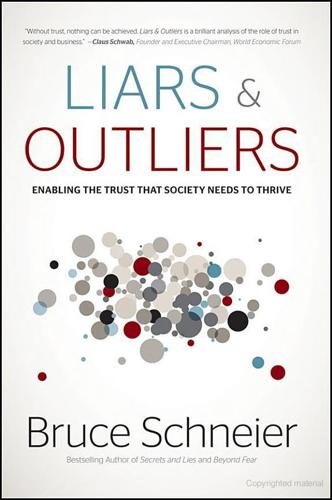
Liars and Outliers: How Security Holds Society Together
by
Bruce Schneier
Published 14 Feb 2012
Economist Steven Levitt looked at the reduction of crime across the U.S. in the 1990s and concluded: “Most of the supposed explanations…actually played little direct role in the crime decline, including the strong economy of the 1990s, changing demographics, better policing strategies, gun control laws, concealed weapons laws and increased use of the death penalty. Four factors, however, can account for virtually all of the observed decline in crime: increases in the number of police, the rising prison population, the waning crack epidemic and the legalization of abortion.” (15) A recent study of 75,000 households served by the Sacramento Municipal Utility District and Puget Sound Energy found that customers who received peer comparison charts reduced their energy usage by an average of 1.2% to 2.1%, a change that was sustained over time.
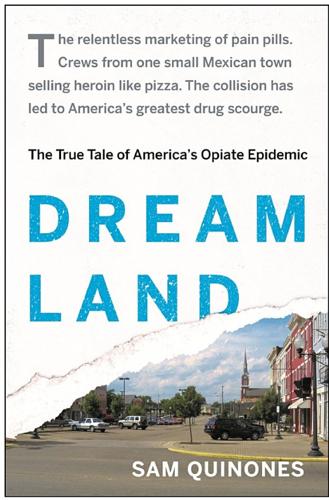
Dreamland: The True Tale of America's Opiate Epidemic
by
Sam Quinones
Published 20 Apr 2015
But through history, illicit drug scourges have always involved a tiny minority of Americans. Baltimore, with a robust heroin market dating back decades, is considered the country’s heroin capital—with the DEA and the city’s health department estimating that roughly 10 percent of the city’s residents are addicted. The crack epidemic, at its height, involved fewer than half a million users a year nationwide, according to SAMHSA estimates. But, as with crack cocaine, the numbers of new opiate addicts by the 2000s were enough to throw hospitals, emergency rooms, jails, courts, rehab centers, and families into turmoil, especially in areas where abuse was new.
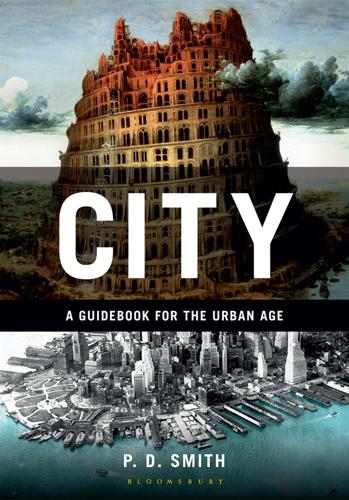
City: A Guidebook for the Urban Age
by
P. D. Smith
Published 19 Jun 2012
But although during his eight years in office there were dramatic falls in crime (in fact, crime was already falling under the previous mayor), there is no evidence that this was due to ‘zero tolerance’ policing. Indeed, crime fell in cities throughout the United States in the early 1990s. In San Diego, where there was no broken windows policy, it actually fell more rapidly. Many studies have since concluded that the fall in crime was due largely to a reduction in the crack epidemic that was sweeping America. James Q. Wilson has himself admitted, ‘I still to this day do not know if improving order will or will not reduce crime.’53 The ‘zero tolerance’ approach has proved influential around the world, not least in the United Kingdom where, in order to combat the fear of crime in urban areas, British cities have pioneered a revolution in surveillance technologies.

Smart Cities: Big Data, Civic Hackers, and the Quest for a New Utopia
by
Anthony M. Townsend
Published 29 Sep 2013
For many years, the program was widely credited for the stunning decline in New York’s crime rate in the 1990s, though many other theories have been put forth to explain it (for instance, the reduction in the number of at-risk teens following the legalization of abortion decades earlier, and the end of the crack epidemic). Regardless of its efficacy, in recent years criticisms of CompStat’s impacts on policing have mounted.34 It turned out that, in their quest to maintain steady reductions in the reported rate of crime, police officers allegedly routinely reclassified crimes as less serious offenses and even discouraged citizens from reporting them in the first place.35 CompStat shows that when data drives decisions, decisions about how to record the data will be distorted.

Evicted: Poverty and Profit in the American City
by
Matthew Desmond
Published 1 Mar 2016
Poor black families were “immersed in a domestic web of a large number of kin and friends whom they [could] count on,” wrote the anthropologist Carol Stack in All Our Kin. Those entwined in such a web swapped goods and services on a daily basis. This did little to lift families out of poverty, but it was enough to keep them afloat.5 But large-scale social transformations—the crack epidemic, the rise of the black middle class, and the prison boom among them—had frayed the family safety net in poor communities. So had state policies like Aid to Families with Dependent Children that sought to limit “kin dependence” by giving mothers who lived alone or with unrelated roommates a larger stipend than those who lived with relatives.6 The family was no longer a reliable source of support for poor people.
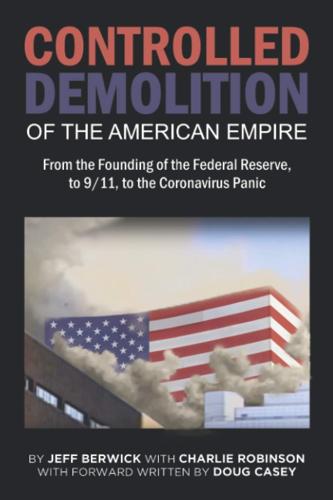
The Controlled Demolition of the American Empire
by
Jeff Berwick
and
Charlie Robinson
Published 14 Apr 2020
Americans must understand that the real reason for this make-believe war was to demolish the inner-cities and put minorities in prison for long stretches, while simultaneously diminishing their ability to ever get a decent job once they get out. It looks like they “won” the war. The New Crack The current opioid epidemic in the Appalachian region of the United States is predominantly a white issue, but the use of drugs in poor areas of the country was established as the norm because of the crack epidemic decades earlier. Is the opioid crisis an accident, or could it be the new crack cocaine push to target the poor white communities? It should be obvious by now that nothing like this happens accidentally, and that the intentional push of these drugs, in association with rampant over-prescribing by medical professionals, is by design.
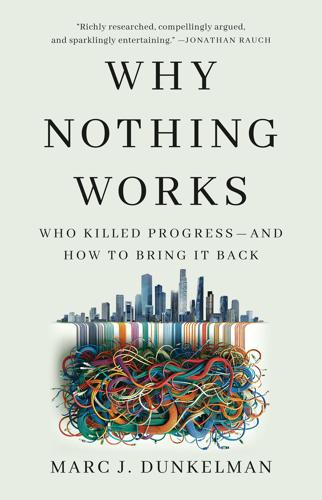
Why Nothing Works: Who Killed Progress--And How to Bring It Back
by
Marc J Dunkelman
Published 17 Feb 2025
Elected nearly a decade earlier on a promise to pull a crime-ridden Big Apple back from the brink of bankruptcy, Koch had cultivated a reputation for being both tough and savvy. But there was no getting around the reality that his Parks Department had wasted millions of taxpayer dollars trying unsuccessfully to rehabilitate Central Park’s Wollman Rink. At the height of the crack epidemic, the skating facility’s closure hardly represented the worst of New York’s problems. But the Parks Department’s ineptitude burnished a notion that New York was fundamentally ungovernable. A mayor famous for cheekily asking New Yorkers, “How am I doing?” appeared not to be doing very well at all.
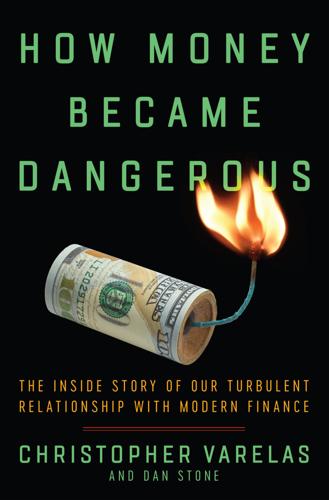
How Money Became Dangerous
by
Christopher Varelas
Published 15 Oct 2019
* * * Stockton also fell victim to Wall Street’s skill for selling a vision, even if that vision was certain to prove unsustainable and disastrous in time. Starting during the recession of the 1970s, Stockton fell into disrepair. The downtown all but emptied out, and the city was overcome by the crack epidemic of the ’80s, along with its attendant crime. Gang activity surged, and Stockton was recast as a city of drugs and violence. By 1997, when Gary Podesto became mayor—he would serve two terms—the economy was looking up, even while most of the community still lived in some degree of squalor. Podesto wanted a legacy project, and he thought that rebuilding the decrepit downtown area could be just the thing.

There Is No Place for Us: Working and Homeless in America
by
Brian Goldstone
Published 25 Mar 2025
Most of Cass’s immediate family could tolerate her short temper and foul moods only in small doses, even though they sympathized with the painful turn her life had taken years earlier. Born in 1976, Cass and her sisters spent the first few years of their lives shuttling between their mother, Theresa, who by the time Cass was seven had fallen prey to the city’s burgeoning crack epidemic, and their grandmother. It was while staying at East Lake Meadows with Granny that Cass and Yateshia had become close friends. Yateshia, too, had been sent to stay with her grandmother; she, too, had a mom struggling with addiction. But unlike Cass, Yateshia’s family was big and sprawling. Lois Mae Evans, Yateshia’s grandmother, had nine children, and as many as eighteen people had been living in her five-bedroom unit at one point.

The Color of Money: Black Banks and the Racial Wealth Gap
by
Mehrsa Baradaran
Published 14 Sep 2017
Part of President Reagan’s appeal, according to one political insider, was derived from “the emotional distress of those who fear or resent the Negro, and who expect Reagan somehow to keep him ‘in his place’ or at least echo their own anger and frustration."6 In 1982, Reagan initiated the War on Drugs, even though drugs had not yet registered as a perceived public problem.7 Even the staunchest advocates of the drug war now admit that it was unfairly skewed to impose the harshest prison sentences on black drug criminals rather than white ones, and it resulted in a generational devastation of the lives of young black men.8 In just a few years, federal funding for antidrug law enforcement skyrocketed (while funding for treatment or prevention programs plummeted). Anyone selling or possessing crack cocaine could face a lifetime in prison. A media offensive sensationalized a crack “epidemic" in the inner city, one that didn’t really exist yet. But it would. The ghettos were an open sore and “crack blew through [them] like the Four Horsemen of the Apocalypse," leaving behind disease, suffering, and acute poverty.9 By 1986, Newsweek declared crack to be a bigger story than the Vietnam war or Watergate.10 Once the nation focused on crack abuse, it was hard to pay attention to the larger, less sensational probl em of structural poverty.
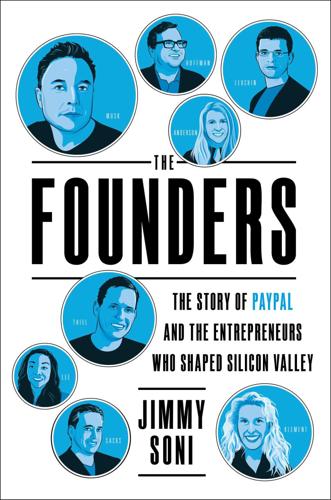
The Founders: The Story of Paypal and the Entrepreneurs Who Shaped Silicon Valley
by
Jimmy Soni
Published 22 Feb 2022
It is a singular tale—and it takes place clear across the country from Silicon Valley. * * * In December 1997, a white van delivered a teenager named Chris Wilson to the Patuxent Institution, a maximum-security correctional facility in Jessup, Maryland, just outside Baltimore. Chris had grown up in Washington, DC, as the crack epidemic ripped through his community. Scores of young African American men fell victim to the mayhem all around them. By the age of seven, Chris had started sleeping on his bedroom floor instead of on his bed, to protect himself from stray bullets. By age ten, he had been to more funerals than birthday parties.

Generations: The Real Differences Between Gen Z, Millennials, Gen X, Boomers, and Silents—and What They Mean for America's Future
by
Jean M. Twenge
Published 25 Apr 2023
After the good times of the 1980s, the economy stumbled in the early 1990s, making it more difficult for young people to find jobs and hardening their already considerable cynicism. Violent crime, which had been rising since the 1970s, reached extreme levels in the early 1990s (see Figure 4.16). Carjackings, rapes, murders, shootings—all had increased exponentially. With the crack epidemic surging and gun violence rising, many were afraid to walk down the street in urban areas at night for fear of getting mugged. The surge in violent crime in the 1980s and 1990s was extreme—and it has not been equaled since. Horrified Silents and Boomers blamed Gen X’ers, the youth of the time; Silent generation columnist William Raspberry (b. 1935) called them “a generation of animals,” while others described them as “superpredators.”
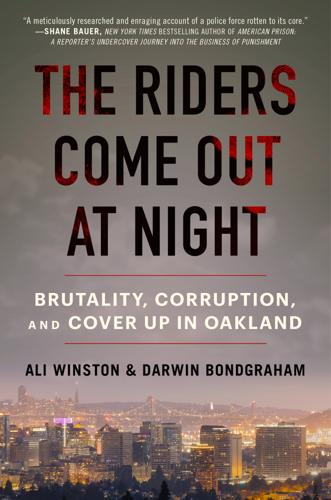
The Riders Come Out at Night: Brutality, Corruption, and Cover-Up in Oakland
by
Ali Winston
and
Darwin Bondgraham
Published 10 Jan 2023
California lawmakers went on a prison-building spree as Democratic and Republican politicians tried to outflank each other by taking ever-harsher stances on drugs and crime.92 Drug War critics, prison abolitionists, and police accountability activists were drowned out by the chorus of voices demanding punitive solutions. By the time Jerry Brown ran for Oakland mayor in 1998, the contradictions of the nineties had reached a breaking point. It was a decade that brought America the crack epidemic and superpredators but was also bookended by LAPD’s vicious videotaped beating of Rodney King and the NYPD’s firing squad execution of Amadou Diallo, two incidents that elevated concerns about systemic racism and brutality in law enforcement. Oakland’s Riders scandal was a corollary to King, Diallo, the 1994 Mollen Commission that examined systemic drug corruption in the NYPD, Ramparts, and countless other shootings, beatings, and human rights violations at the hands of police.
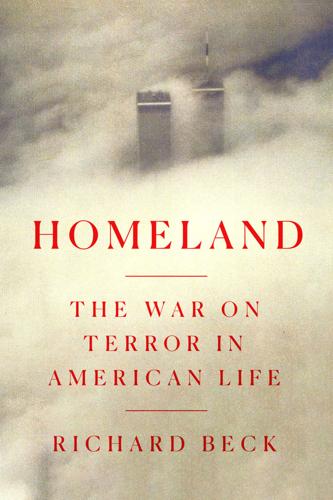
Homeland: The War on Terror in American Life
by
Richard Beck
Published 2 Sep 2024
“What drew me to Islam was more of that militant aspect,” he said. “Not a jihadist but more of a stand up, take no bullshit.” By the 1980s, the Panthers’ revolutionary project was much diminished from its glory days, but Torres was still part of a neighborhood security council, walking the streets and driving off drug dealers during the height of the crack epidemic. “I was an asset to the community,” he said. “I loved it. I loved it.” Then he did something stupid. He robbed a New York City subway booth. He says he committed the robbery not out of petty greed but because he was a “revolutionary activist,” describing the places he targeted—post offices and banks were also on the list—as “institutions to be appropriated for our cause.”[35] The money from the theft was given back to the community, but Torres got caught, and he was charged with grand larceny, impersonation of a New York City transit cop, and possession of a weapon.

I Want My MTV: The Uncensored Story of the Music Video Revolution
by
Craig Marks
and
Rob Tannenbaum
Published 19 Sep 2011
HANK SHOCKLEE: If Public Enemy was going to do a video, we wanted something outside the norm. My thing is, I hate literal translations. The video should always tell you what the lyric doesn’t. LIONEL MARTIN, director: I didn’t even know who Public Enemy was. HANK SHOCKLEE: The song was about drug addiction, especially crack. The crack epidemic was destroying the black community. Everybody I know, including myself, had close family members who were on crack or trying to recover from it. The fact that the song was disjointed gave us the impetus to create skits within the video. I didn’t want to make light of crack, but a video needs to have entertainment value.

The Rough Guide to New York City
by
Rough Guides
Published 21 May 2018
crack is wack Keith Haring fans should make the pilgrimage to the subtly named Crack is Wack Playground (E 127th St and Second Ave), where the pop artist painted the now-famous Crack Is Wack mural in 1986 on both sides of the handball court walls. Featuring Haring’s signature cartoonish style and bright colours, the mural made a serious anti-drug statement at the height of the Harlem crack epidemic. Note that it will be impossible to view the mural (as it’s enclosed by a protective shelter) during reconstruction of Harlem River Drive (to be completed by the end of 2019). Caribbean Cultural Center 120 E 125th St, between Park and Lexington aves • Tues, Wed & Fri 11am–3pm, Thurs 11am–8pm • $5 • 212 307 7420, cccadi.org • Subway #4, #5, #6 to 125th St The Caribbean Cultural Center opened in this former firehouse in 2016, offering a series of revolving art exhibitions (focused on the African diaspora in the Americas), and a rich programme of events and performances.
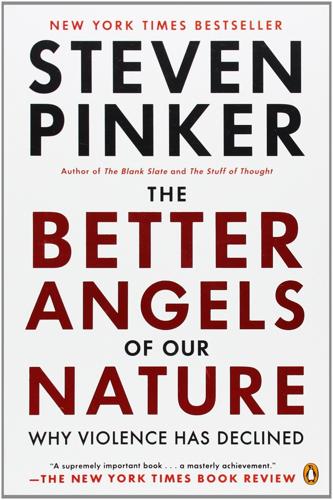
The Better Angels of Our Nature: Why Violence Has Declined
by
Steven Pinker
Published 24 Sep 2012
The links include the assumptions that legal abortion causes fewer unwanted children, that unwanted children are more likely to become criminals, and that the first abortion-culled generation was the one spearheading the 1990s crime decline. But there are other explanations for the overall correlation (for example, that the large liberal states that first legalized abortion were also the first states to see the rise and fall of the crack epidemic), and the intermediate links have turned out to be fragile or nonexistent.149 To begin with, the freakonomics theory assumes that women were just as likely to have conceived unwanted children before and after 1973, and that the only difference was whether the children were born. But once abortion was legalized, couples may have treated it as a backup method of birth control and may have engaged in more unprotected sex.